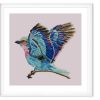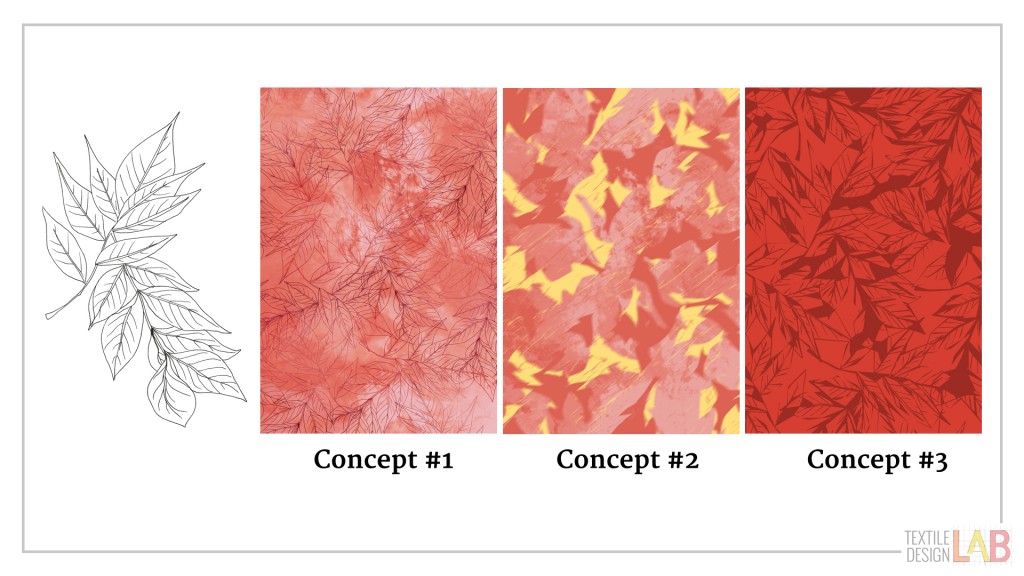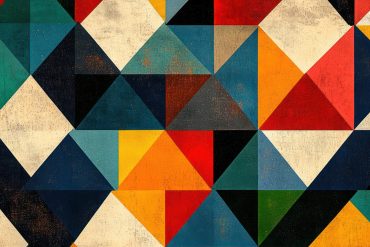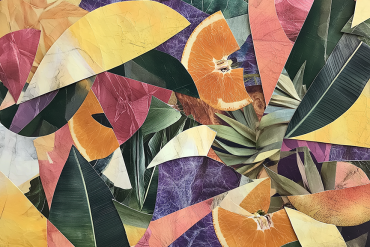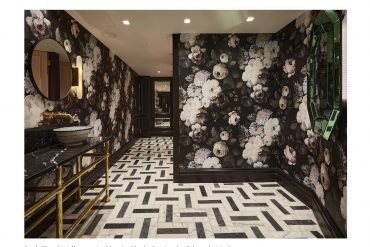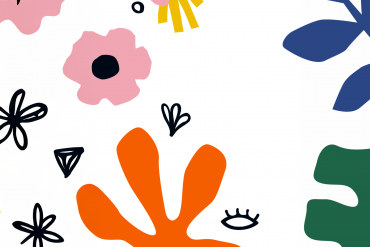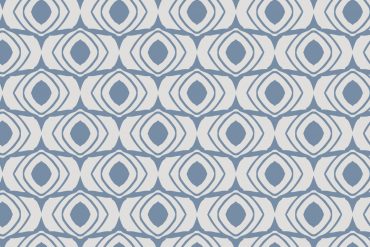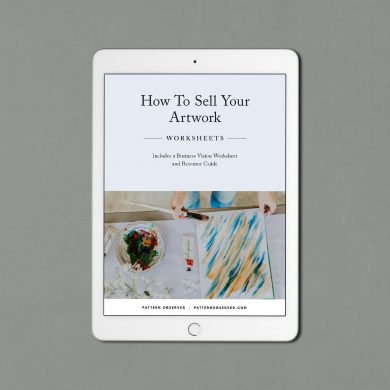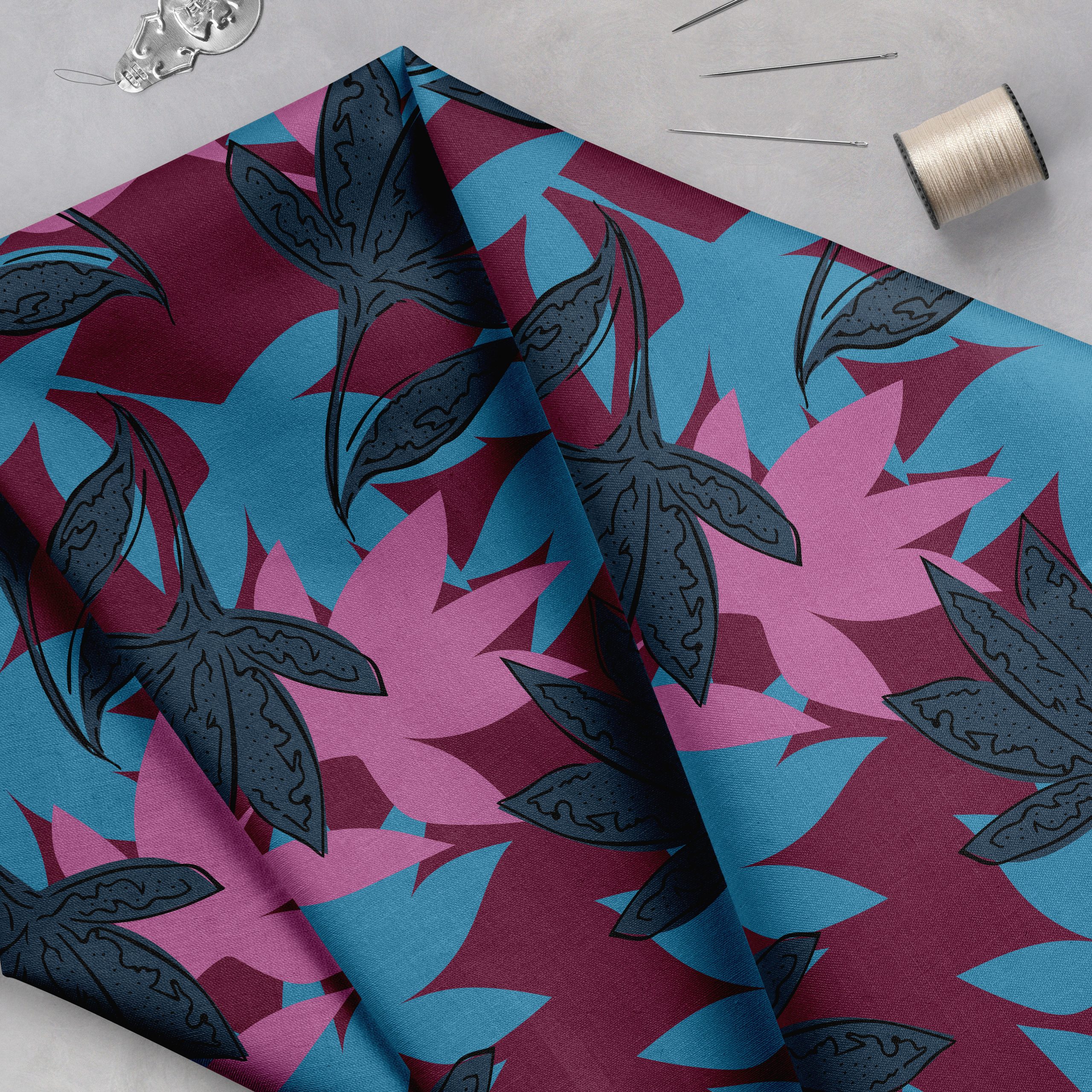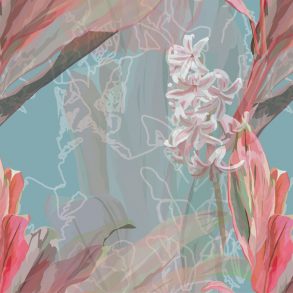
Tip #1: Get Organized.
Develop a file organization system that works for you and then stick with it! File organization and organization in general is not one of my strong suits. I honestly think that my creative brain thrives in chaos. The only way I could come up with an effective file organization system was to remember, I had to keep it simple. Here is how I organize my clients’ work and information: I create a main folder labeled “Clients”, create sub-folders for each client and sub-folders with specific information. For example, for each client and season I have a:
Trend folder: for gathering trend and client information
Print folder: for storing all print development, divided by print name
Final folder: for storing all the final artwork files that were sent to the factory for production
Chances are, you are thinking, “That is so simple!” And you’re right, but it works for me.
Tip #2: Use the Right Tools
“Michelle, how are you able to get so much done?” This is a question that I hear frequently, and I realize that from the outside it may appear that I am all over the place designing, writing, and teaching, but I do rely on a large team of freelancers to help me get everything done. You are all familiar with Chelsea and Jamie, but I also rely on my husband, who maintains our websites, an editor, a copywriter, a graphic designer and other consultants such as SEO advisors, lawyers, business coaches, my daughter’s daycare, and freelance designers when our client work gets overbooked.
Having all this support is what enables Pattern Observer and Textile Design Lab to do so much—and at a high level. We have one source that ties us all together and keeps us on the same page, Asana. With Asana, we are able to communicate as a team and stay productive. This tool was created for teams to be able to work on projects together and communicate without the need for email, but I think it works well for individuals as well. In fact, I often use the tool for solo projects and it’s free, which means there are no excuses not to try it!
The ‘team cohesiveness’ aspect of Asana is amazing, but I also appreciate that it schedules my day for me. Each night I try to review my Asana task list for the next day and it is a great way to stop me from waking up in the morning with that awful thought, what’s going on today? I can begin my day feeling driven and motivated to work through my list. Another benefit of checking the list the night before is that it allows me to think through my upcoming tasks and reflect on what my upcoming day will entail. You know, how much coffee should I drink that morning?
Here’s what the rest of the team has to say about Asana:
“I like that it has different workspaces you can set up, so I have the PO workspace, and a personal workspace where I keep my own to-do list. I’ve also had workspaces for past clients, as well, all without having to log out.” – Chelsea
“I like that you can set recurring tasks, I use that feature for Chelsea’s Challenges, the TDL newsletter, etc.” – Chelsea
“I also love being able to upload files directly to Asana!” – Chelsea
“I like that I can reply via email to someone’s question or post and not have to login to Asana to do it. Just like I am doing now! In addition to Pattern Observer, I use a personal workspace for my freelance work and other projects. I like that I get an email reminder to keep me on task.” – Jamie
Check out the Asana guide here. It will help further explain it and I feel confident that you’ll see how it can help your days become more productive with very little hassle.
Tip #3: Communicate Efficiently
Multi-tasking has been found to be incredibly unproductive, but it is a trap that many of us fall into—think about your inbox or social media accounts. How often do you go to them? Admittedly, I am guilty of this. I leave my Google window open and glance at the number of unread messages while I’m working, and I get notifications every time I get a new message. It is a horrible habit! I’m working on breaking it and hope you will, too. Lucky you if you don’t have it! I have found that I am MUCH more productive when I close that Google window, focus on my immediate task, and set aside a few times a day to check emails. I’ve found that once in the morning, once at lunch, and once toward the end of the day works great for me. People see that I respond quickly and I gain a calmer, more focused day, which makes for a happier me. Don’t let your inbox control your day and infringe on your productivity. Make work your top priority!
Tip #4: Make the Most of Your Sketches
If you want to increase both productivity and profitability in your design business then it is important to learn how to make the most of your ideas, sketches, and creative process. If you have taken our Sellable Sketch course then you know how important sketching is to the design process. Sketching brings you closer to your innate artistic style and is a fun, relaxing exercise, making it a great way to brainstorm new concepts and collections. I am sure you have created patterns and collections from your sketches in the past, but did you ever to stop to think if you are using these sketches to their fullest potential?
When I am working with a client or developing patterns to sell, I try to create several unique concepts from one sketch or idea. My goal is to create concepts that are so unique that the client or buyer would never know that the two (or three) designs came from the same sketch or illustration.
For this process I find that Photoshop allows me the most freedom to create a variety of concepts from one sketch. I use my “go-to” tools, which are filters, overlays, textural photographs and indexing, and try to create as many unique patterns as quickly as possible. I shut down my email, put away my phone, and just focus on cranking out concepts, often humming along to some great music and enjoying the process. I experiment with different filters, overlays, colorways, brushes, etc. until I see something that I like and then I hit “save”. Some of my saved concepts make the cut and get sent to clients or saved for future sale, others never see the light of day and that’s OK.
For example, from this sketch I was able to create these three unique concepts. If a client requests a leaf print, I could show these three options and feel confident that I am showing enough variety to start the conversation and give the client plenty of options to choose from. If selling these prints through our studio, I feel confident that the patterns are unique enough to go to three different clients without conflict.
In our course, Five Days to a Better Business, I share how I created each of these three prints, but I hope that you take away the larger message of this lesson: Please make the most of your ideas and sketches. A solitary sketch can result in thousands of dollars worth of sales if manipulated in the right ways. Respect your work and make the most of what you create.
Tip #5: Use Your Creative “Leftovers”
I just read this great quote from Scott Adams, “Creativity is allowing yourself to make mistakes. Art is knowing which ones to keep.” We all have designs, sketches, and inspiration materials that don’t make the cut, but should they be tossed aside for all of eternity? No! Here are a few examples of how to keep your “leftovers” working for you. After all, “Waste not, want not!”
1. Did you find extra trends during your research? If yes, create a future projects folder on your desktop, Pinterest, or your Asana task list—wherever you store your ideas for your next collection.
2. Have you created extra patterns? Did a pattern not fit in with the rest of your collection? Depending on how you organize your files you might want to create a leftover folder that you can return to when you wrap up a collection. When you are out of ideas and just don’t know what you want to work on next, choose your favorite pattern out of the folder and create a collection based around it.
Are you excited to enhance your productivity and run a more profitable design business? Learn how in our new Textile Design Lab course: Five Days to a Better Business.


